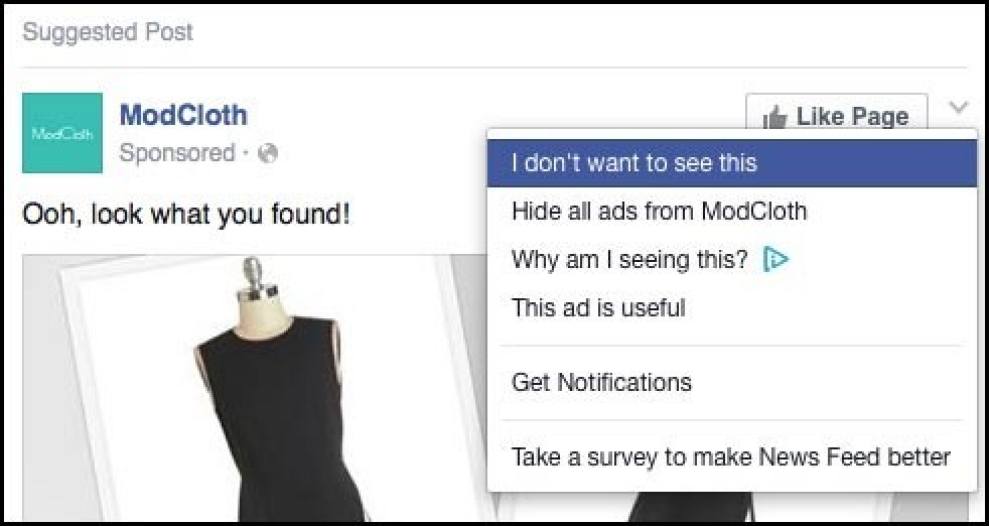by Cydney Hatch • December 13, 2018
How to Use Targeted Advertising in a Data Paranoid World
Online information privacy is paramount for internet users today, considering the increased risk of exposing one’s identity, interests, and behavior online. So, it shouldn’t come as a surprise that the realm of targeted advertising is also facing a fundamental change.
In recent years, there has been a rise of anonymous ad-blockers, which make companies feel a pinch in their marketing budgets. At the same time, privacy-aware web surfers seek protection from invasive online tracking via cookies and other means. Thus, it has become more critical than ever for marketers to change how they do targeted advertising. Customers shouldn’t feel as if they’re being “stalked.” Rather, they should see targeted ads when they actually want to purchase a certain product.
This guide discusses the place of targeted advertising in a world where consumers are becoming increasingly concerned about data protection.

What Is Targeted Advertising?
Targeted advertising refers to the practice of sending ads to web users based on their online behavior, demographics, and buying history. This includes information that they have explicitly shared, as well as data that can be inferred about them through implicit behavioral or demographic attributes.
For example, web advertisers may choose to show you a pair of running shoes after you visit several web pages about hiking and marathon running. They might also send you ads for new smartphones if your search history contains terms like “smartphone reviews” or “latest mobile technology.” Beyond the examples mentioned above, targeted ads can also consider your geographical location, income level, and social media activity.
Some examples of targeted ads include:
- Social media ads: After you visit a web page, social media sites — such as Reddit — often show you ads from the same company or products that were advertised on the previous site. For instance, you may have noticed how Facebook shows you ads of things you searched in Google just a while ago.
- Web browsers ads: Search engines — such as Google — place ads on search result pages based on the keywords you previously browsed for. If you buy something online, you might see ads for similar items on other websites.
Behavioral ads: Some ecommerce websites, like Amazon, show you ads based on your purchasing habits.

Targeted Advertising: Trustworthy or Not?
Marketing analytics and niche marketing strategies have seen major improvements in the past few years. They have helped make marketers better understand their target audiences, make relevant suggestions to them, and even determine the price points of their products. However, despite these benefits, hyper-targeted ads can often feel too intrusive for web users nowadays. The reason is that they are usually based on assumptions about individuals instead of explicitly-shared information or explicit user preferences.
For example, when you search for a new book on an Amazon affiliate site, you will be shown an ad for another book related to the one you just searched for. This happens because Amazon tracks your past behavior and then assumes that since you have read similar books before, you would probably enjoy this other book as well.

While this may seem harmless at first glance, there are still various problems associated with targeted advertising:
- It’s often difficult to opt out of targeted ads: Most people are not even aware that they are being tracked, and it’s usually quite difficult to stop the ads from following you around the web.
- Targeted ads are often based on inaccurate assumptions about people: Sometimes, marketers make incorrect assumptions about individuals due to incomplete or erroneous data. This can lead to irrelevant or even offensive ads to the recipient.
Advertisers have a lot of control over what potential customers see: Since targeted ads are based on past behavior, advertisers can choose to show possible customers whatever they think will be most profitable for them — even if it’s something customers are not interested in.
Using Target Advertising in a Data Paranoid World
While there are some challenges, they should not discourage you from using audience-targeted marketing. If you do it right, you can make your ads more effective. The key is to find balance when using marketed advertising. Here are some tips to create targeted ads that don’t come off as “creepy” to your customers and generate revenue.
Be Transparent
Transparency is essential for building trust with your customers. They need to know what you’re doing with their data and how it’s being used.
Make sure that your privacy policy is clear and concise and that it explains in detail how you plan on using the data you collect. You should also make it easy for users to opt out of targeted advertising if they don’t want to participate.

Don’t Make Assumptions About Individuals
When collecting data, be sure to only use information that the user has explicitly shared. This means avoiding tracking cookies and other methods of collecting data without user consent.

Avoid Sensitive Information
Avoid targeting sensitive information, such as sexual orientation and health conditions. Only collect data that you definitely need to make your marketing campaign successful.
Platforms like Facebook and Google limit advertisers from targeting attributes like relationship status, sexual preferences, and race. Make sure you are aware of these restrictions before you start your campaign.
Use Relevant Ads
Make sure that the ads you are displaying are relevant to the interests of your target audience. This means doing your research and understanding what your customers are interested in.
Additionally, test different versions of your ads to see which ones generate the most engagement. Remember that not all customers are the same, so you’ll need to tailor your marketing strategy accordingly.

Justify Data Collection
Besides being transparent, it’s important to share reasons with your customers as to why you’re gathering this information.
For instance, if you’re collecting email and contact information on the landing page of your website, let customers know what you’ll do with this information. By doing so, you allow your target consumer to:
- Feel comfortable sharing their information with you
- Understand what is motivating you to collect this information
- Decide if they want to share their data
For instance, LinkedIn specifies that they use the information given by the user to ”provide support, personalize, and make our services more relevant”.

Final Words
While it’s important to be transparent and avoid making assumptions about individuals, targeted advertising can still be a powerful tool if used correctly.
Contextual targeting and people-based ads help marketers attract customers and sell more products and services without coming off as too intrusive. By following the tips above, you can create relevant and trustworthy ads for your customers.






